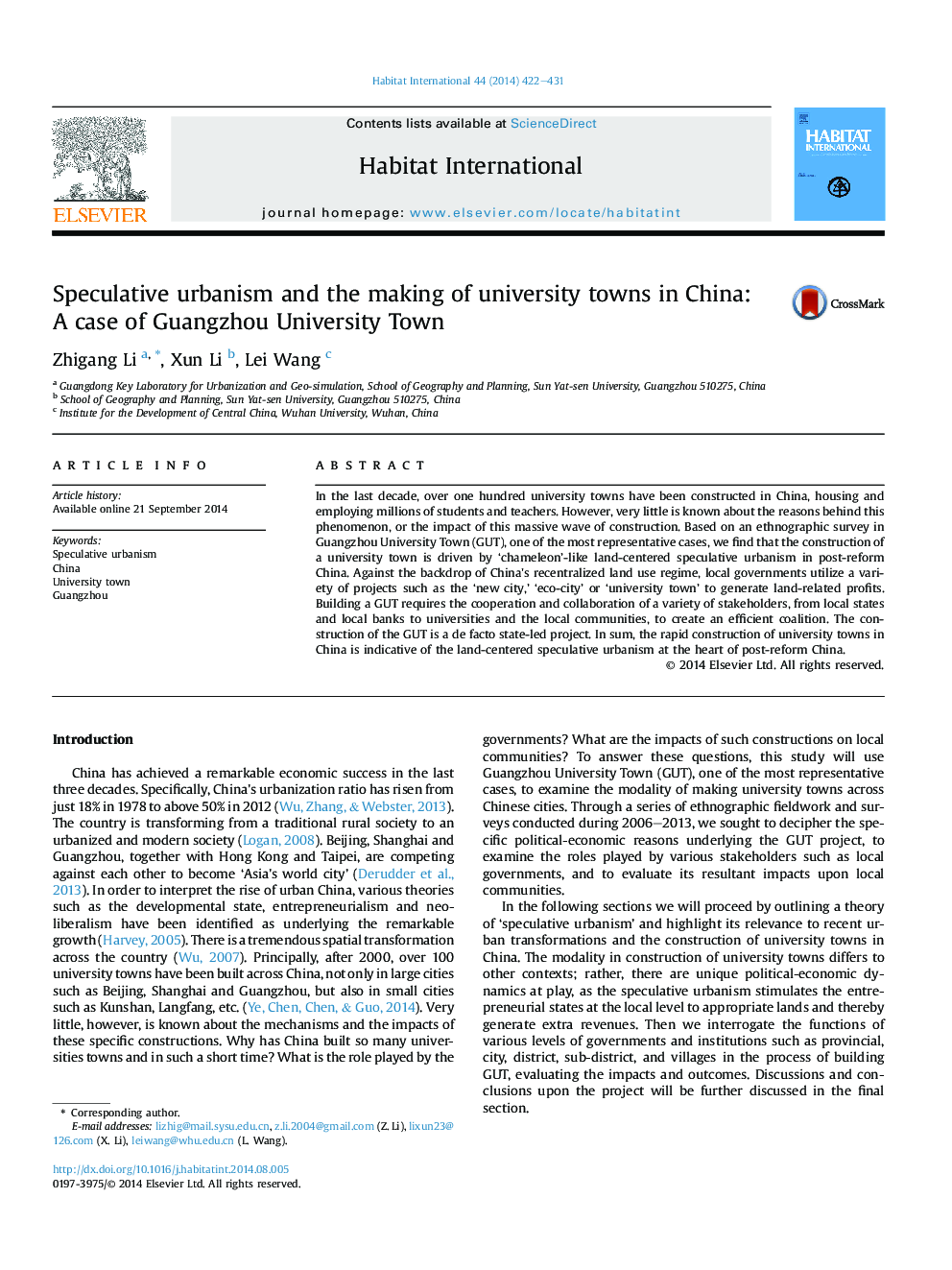| Article ID | Journal | Published Year | Pages | File Type |
|---|---|---|---|---|
| 1047791 | Habitat International | 2014 | 10 Pages |
•The construction of GUT is de facto a local state-led project.•The fast making of university towns in China exemplifies the rise of land-centered speculative urbanism in China.•It contributes to the literature by examining the process of urban space production at the microscopic level.•Speculative urbanism underscores the complicated relations between the central and the local governments in China.
In the last decade, over one hundred university towns have been constructed in China, housing and employing millions of students and teachers. However, very little is known about the reasons behind this phenomenon, or the impact of this massive wave of construction. Based on an ethnographic survey in Guangzhou University Town (GUT), one of the most representative cases, we find that the construction of a university town is driven by ‘chameleon’-like land-centered speculative urbanism in post-reform China. Against the backdrop of China's recentralized land use regime, local governments utilize a variety of projects such as the ‘new city,’ ‘eco-city’ or ‘university town’ to generate land-related profits. Building a GUT requires the cooperation and collaboration of a variety of stakeholders, from local states and local banks to universities and the local communities, to create an efficient coalition. The construction of the GUT is a de facto state-led project. In sum, the rapid construction of university towns in China is indicative of the land-centered speculative urbanism at the heart of post-reform China.
